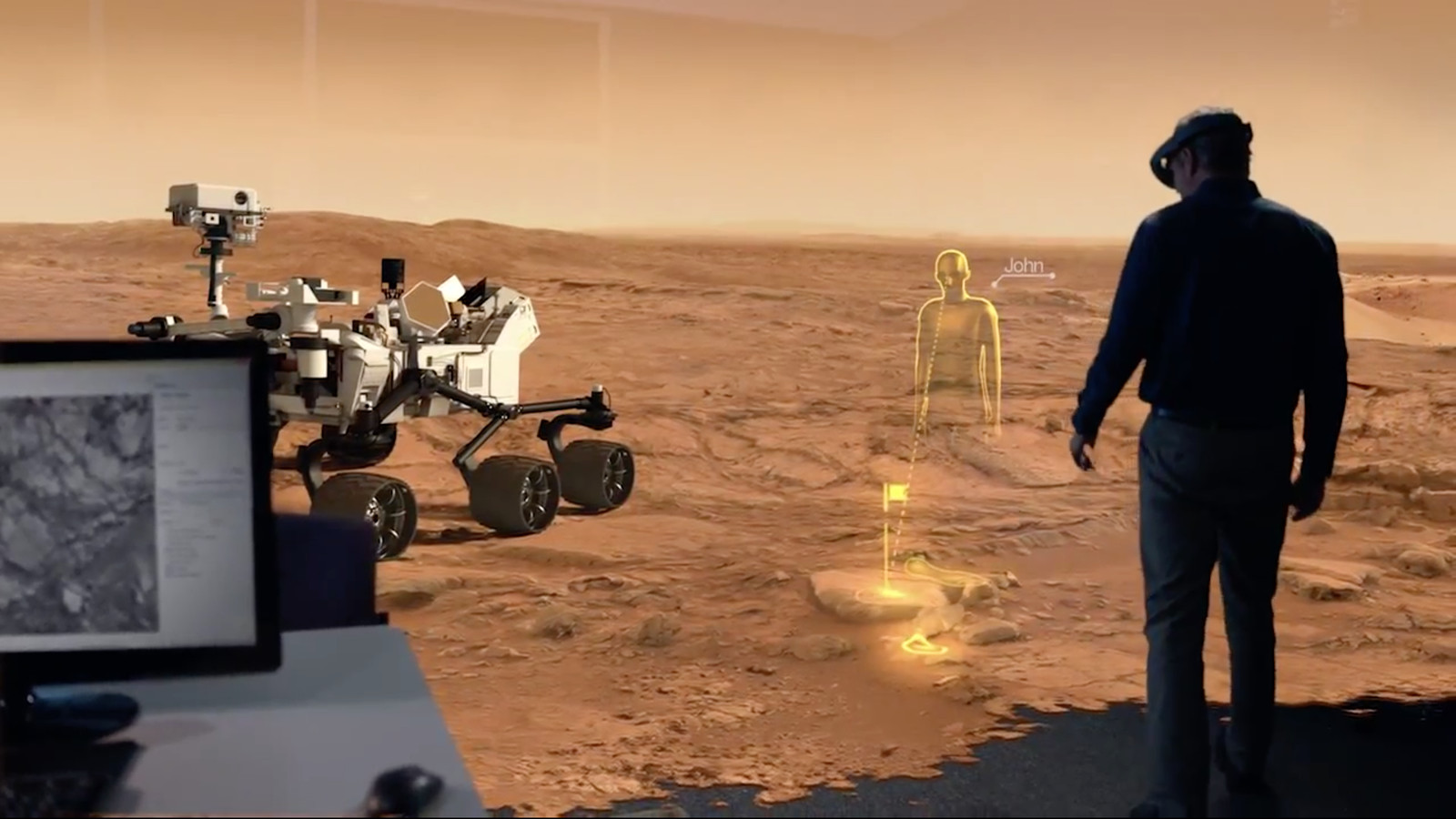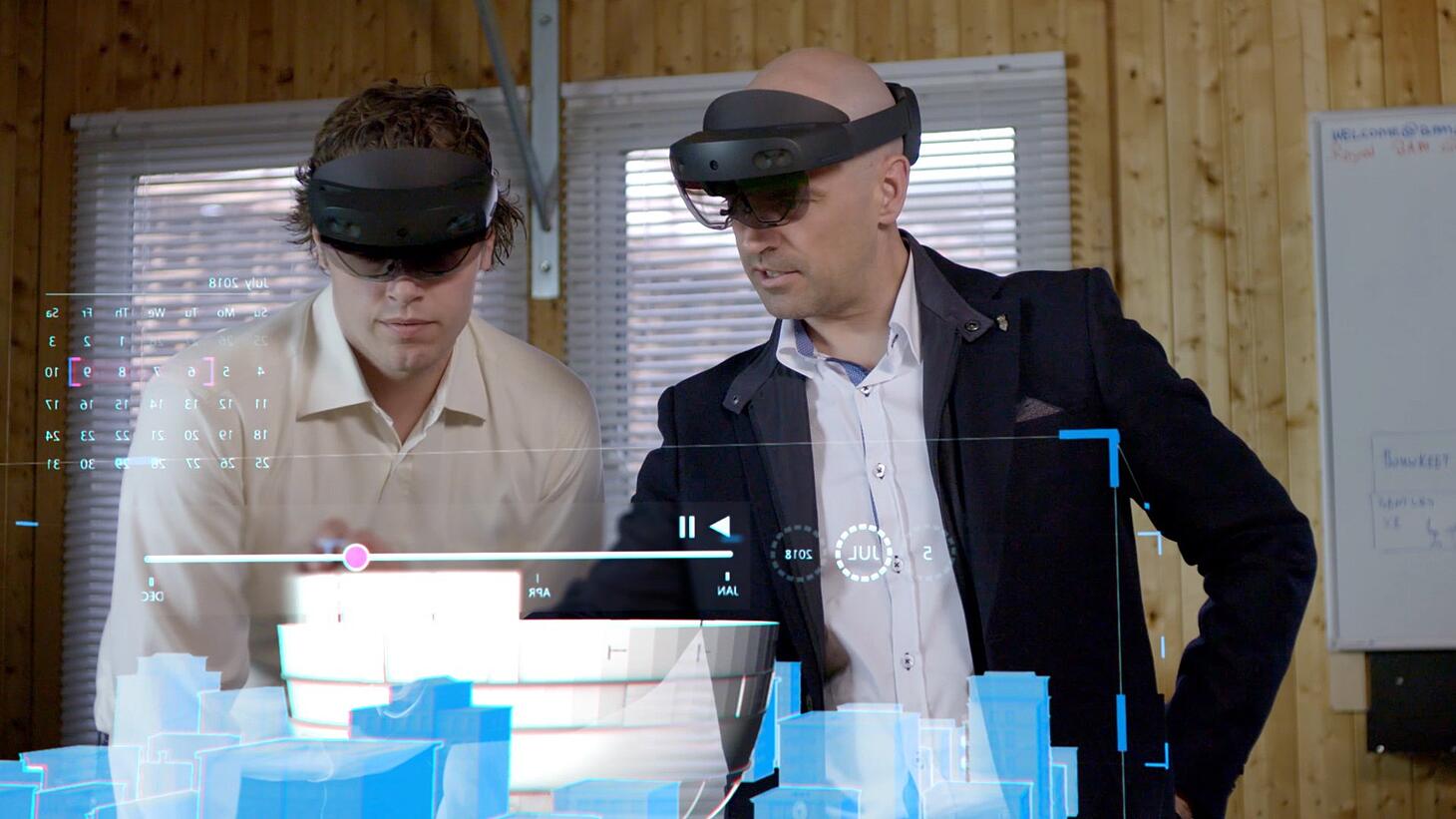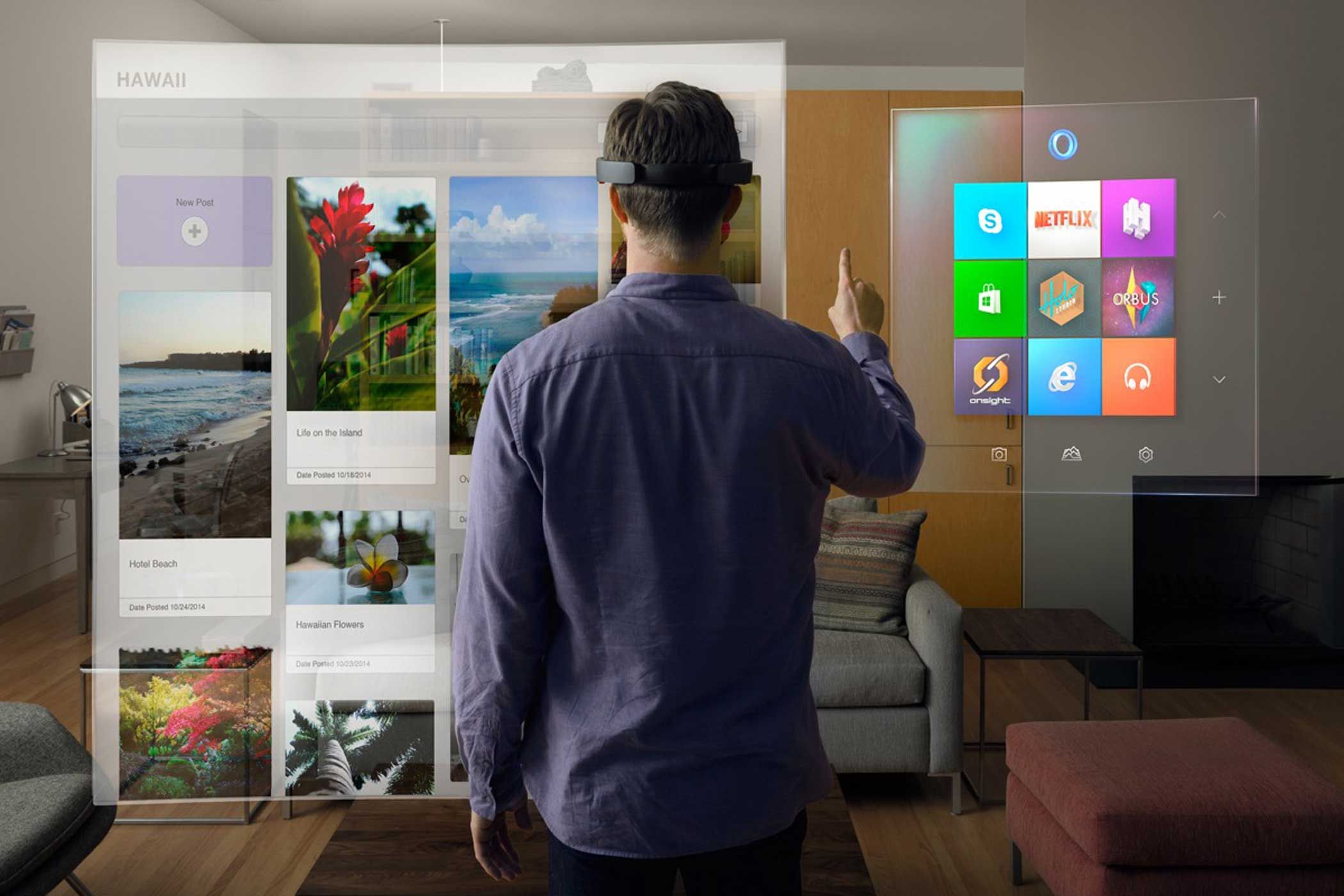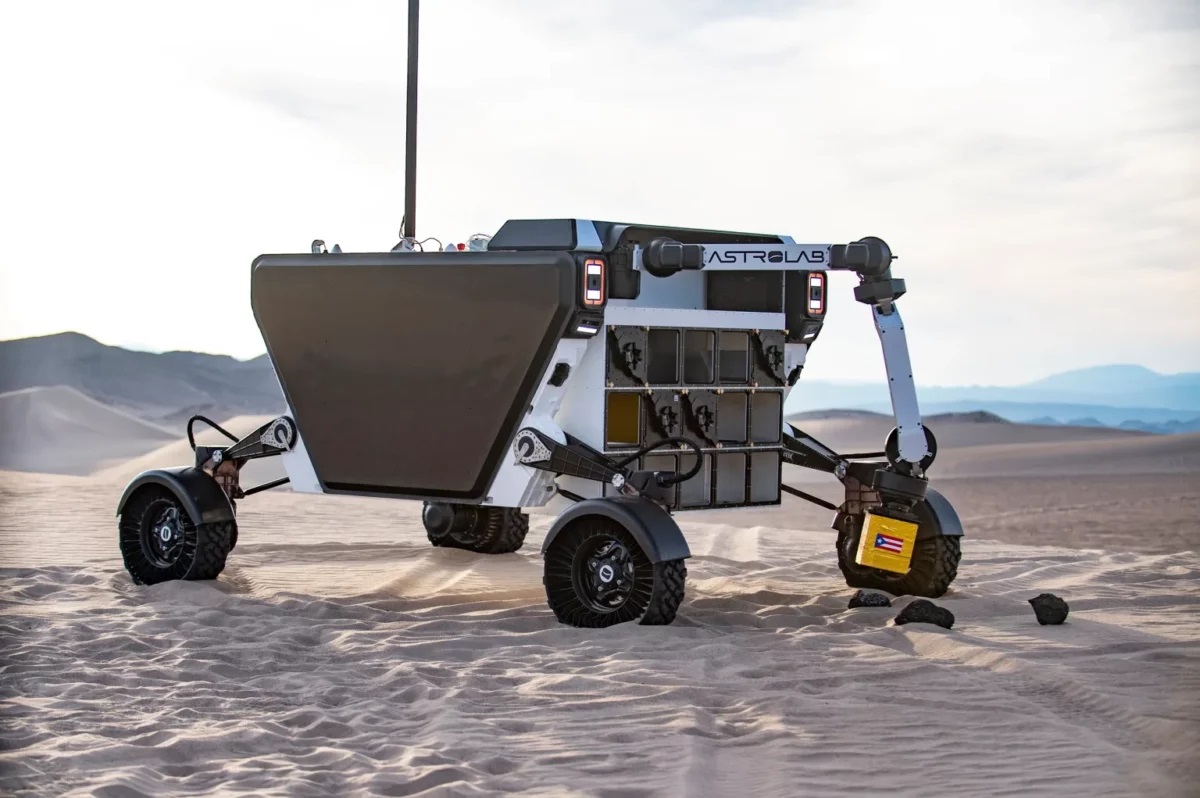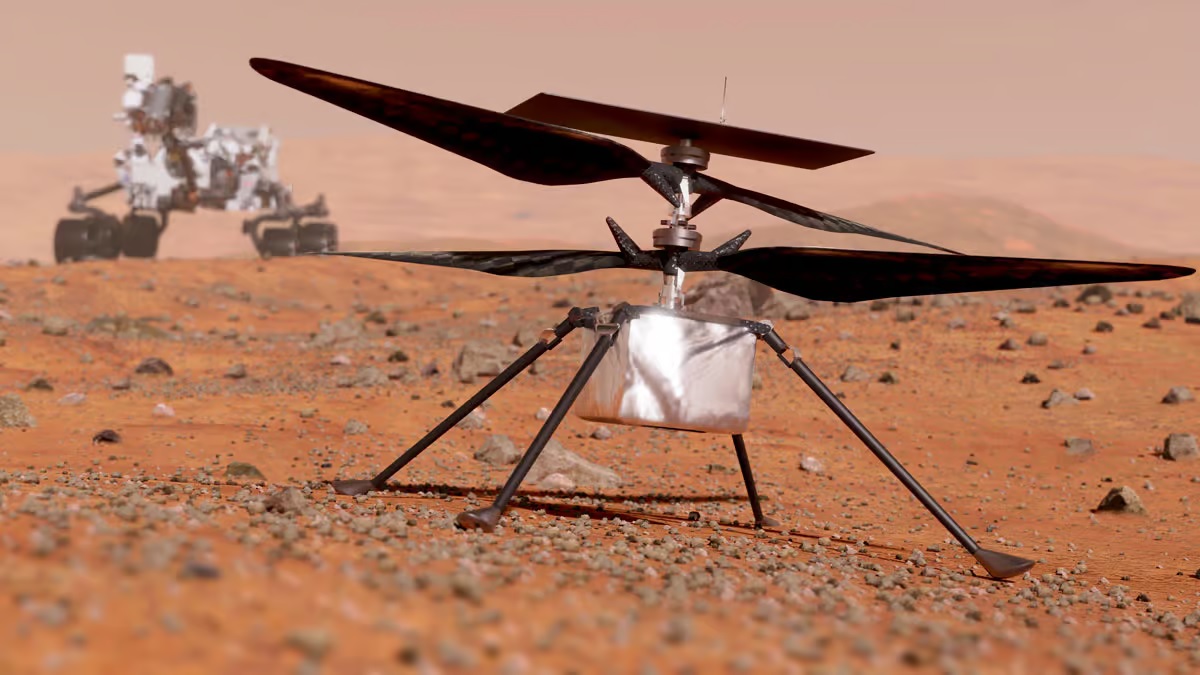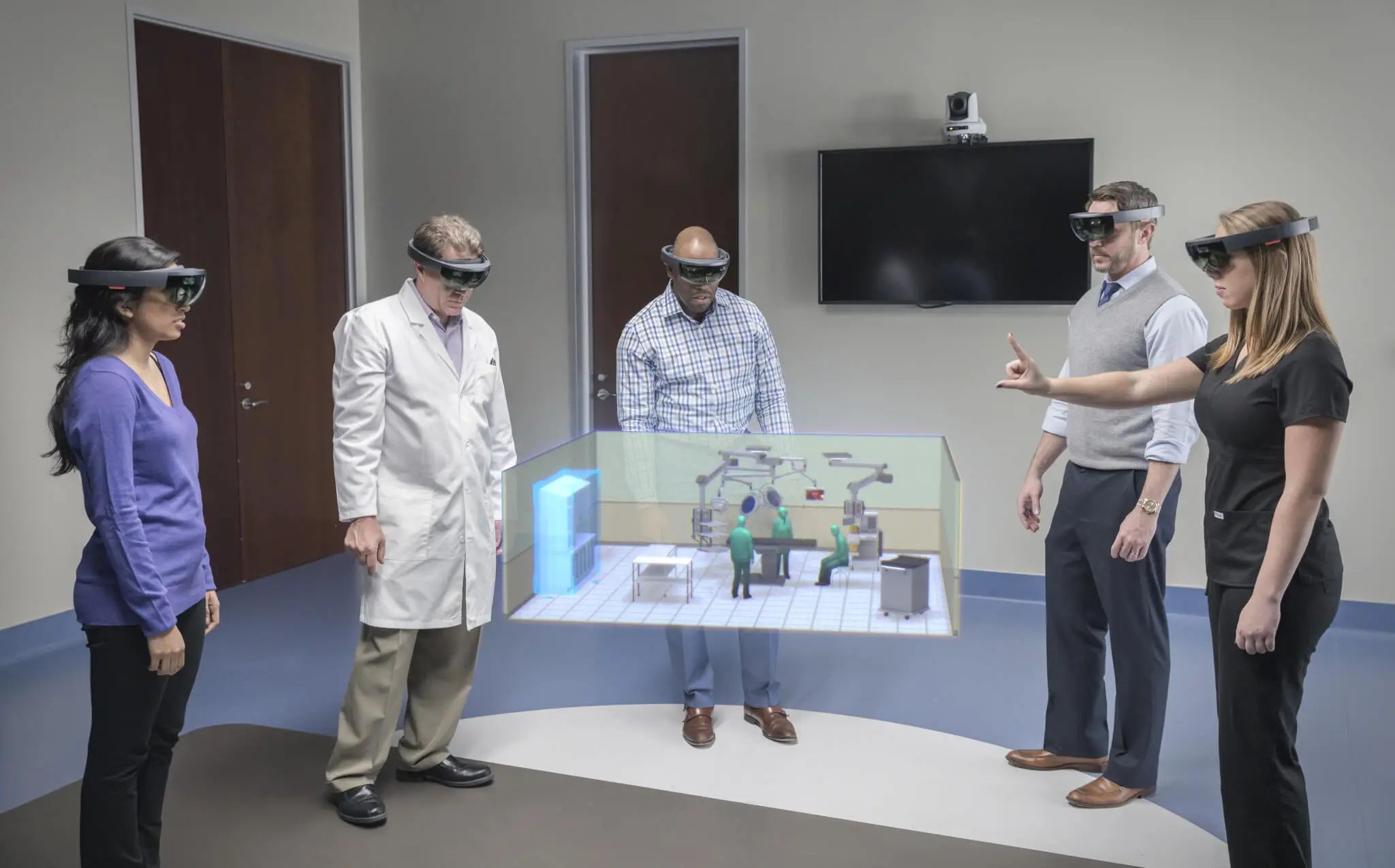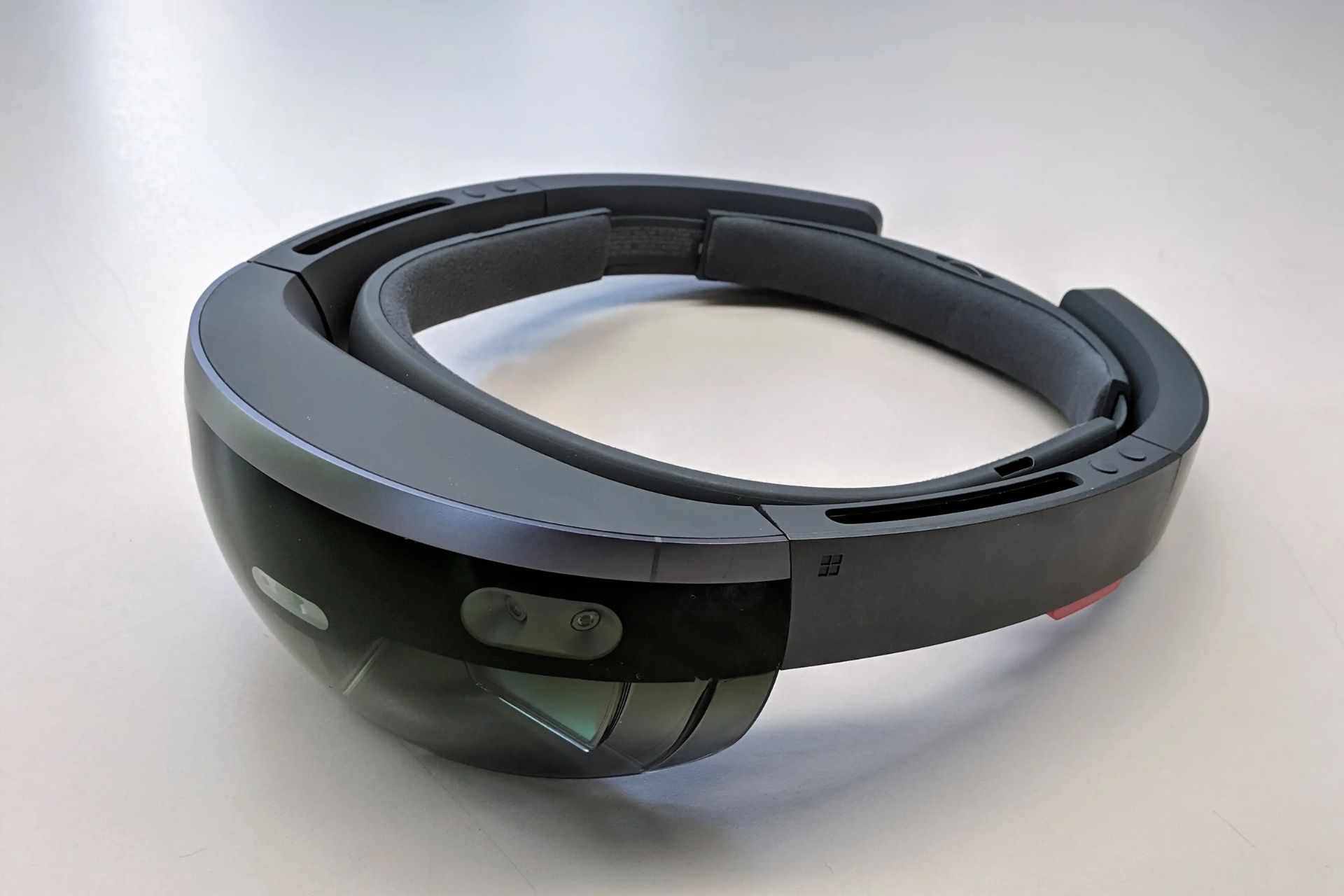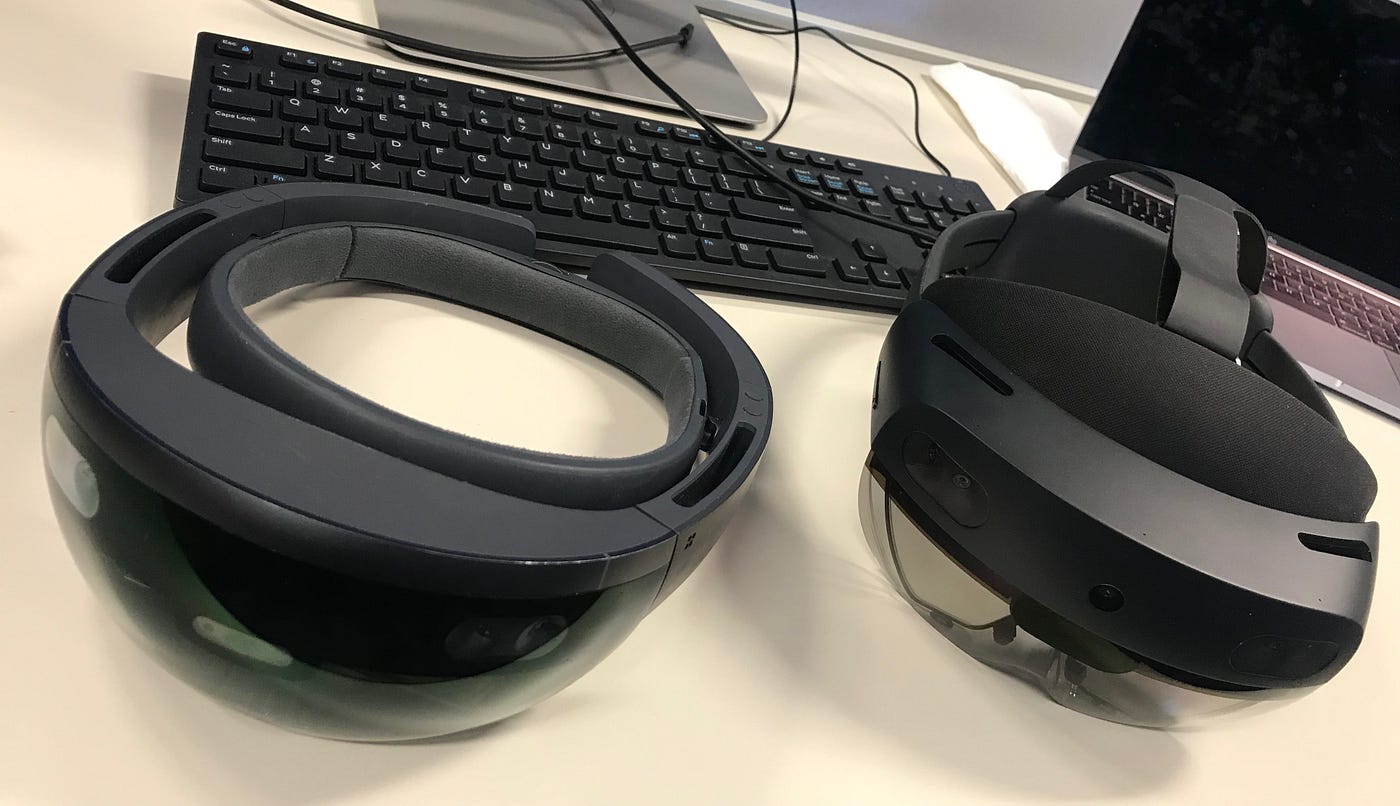Introduction
Humanity’s fascination with Mars has continued to grow over the years. The red planet has captivated our imagination and represented the next frontier of human exploration. As we inch closer to realizing our dreams of sending humans to Mars, NASA continually pushes the boundaries of exploration and technology. One significant technological breakthrough contributing to this mission is the utilization of Microsoft’s HoloLens augmented reality headset.
HoloLens, developed by Microsoft, has revolutionized the concept of mixed reality, allowing users to interact with virtual objects while still being aware of the real-world environment. This cutting-edge device combines virtual elements with the physical world, creating an immersive experience that has applications across various industries. One such industry that has embraced HoloLens’s capabilities is space exploration, with NASA incorporating this technology into their design process of the next generation Mars rover.
The collaboration between Microsoft and NASA has led to groundbreaking advancements in rover design. By leveraging the power of HoloLens, NASA engineers and scientists can simulate the Mars environment and enhance their visualization and communication efforts. This collaboration has streamlined the rover’s design process, significantly improving efficiency and collaboration among the project team.
In this article, we will explore how HoloLens is revolutionizing the way NASA designs the next Mars rover. We will delve into the details of how HoloLens works, the collaboration between Microsoft and NASA, and the specific applications of HoloLens in simulating the Mars environment. Furthermore, we will examine how HoloLens enhances visualization and communication, and how it streamlines the design process for the Mars rover project.
Join us on this exciting journey as we take a closer look at the intersection of cutting-edge technology and space exploration. Learn how HoloLens is helping NASA overcome the challenges of designing a rover that will one day roam the Martian surface, paving the way for future human missions to the red planet.
Understanding HoloLens
In order to understand how HoloLens is transforming the design process of the next Mars rover, it is crucial to have a clear understanding of the technology itself. HoloLens is an augmented reality headset developed by Microsoft, which combines virtual reality elements with the real world, creating a mixed reality experience.
HoloLens operates by projecting holograms onto the user’s field of vision, allowing them to interact with and manipulate virtual objects in a physical space. Unlike virtual reality, which completely immerses users in a computer-simulated environment, HoloLens maintains the user’s awareness of the real world while overlaying digital information.
The headset includes a variety of sensors, such as an array of cameras, depth sensors, and an inertial measurement unit (IMU), to track the user’s position and movement in relation to their surroundings. This allows HoloLens to map digital holograms onto the physical environment accurately, creating a seamless integration between the virtual and real worlds.
HoloLens also employs spatial sound technology, delivering audio cues and 3D sounds that are spatially aligned with the virtual objects. This enhances the user’s immersion and perception of the virtual elements, making the experience more realistic and engaging.
With its advanced capabilities, HoloLens opens up a world of possibilities for NASA’s Mars rover design process. By leveraging the mixed reality features of HoloLens, engineers and scientists can visualize and manipulate virtual models of the rover as if they are physically present in the Mars environment.
In the next sections, we will explore the collaboration between Microsoft and NASA in utilizing HoloLens for rover design, as well as the specific applications of this technology in simulating the Mars environment. We will also delve into how HoloLens enhances visualization and communication, and how it streamlines the design process for the next Mars rover project.
The Collaboration between Microsoft and NASA
The collaboration between Microsoft and NASA has been crucial in harnessing the power of HoloLens for the design of the next Mars rover. Both organizations recognized the potential of mixed reality technology in transforming the way space exploration projects are approached and executed.
Microsoft’s expertise in developing cutting-edge technology and NASA’s deep understanding of space exploration needs created the perfect synergy for this collaboration. Together, they embarked on a mission to revolutionize the rover design process by integrating the capabilities of HoloLens into NASA’s workflow.
Microsoft worked closely with NASA engineers and scientists to understand their requirements and tailor the HoloLens experience specifically to meet the demands of the Mars rover project. The collaboration involved extensive testing and feedback cycles to ensure that HoloLens seamlessly integrated with NASA’s existing design tools and processes.
The result of this fruitful collaboration was the development of software applications and interfaces that enable NASA personnel to design, visualize, and manipulate virtual representations of the rover using HoloLens. The software allows for real-time collaboration among team members, regardless of their physical location, which significantly improves efficiency and communication.
Not only did this collaboration lead to the successful integration of HoloLens into NASA’s design process, but it also facilitated the exchange of knowledge and expertise. The Microsoft team gained valuable insights into the unique challenges and constraints of space exploration, while NASA personnel benefited from Microsoft’s technological prowess and innovative solutions.
The collaboration between Microsoft and NASA represents a strong partnership between the private and public sectors, combining resources, talent, and expertise to push the boundaries of space exploration. Together, they are pioneering new frontiers in design and technology, setting the stage for future breakthroughs in the field.
In the next sections, we will explore the specific applications of HoloLens in simulating the Mars environment and how it enhances visualization and communication in the rover design process. We will also delve into how HoloLens streamlines the design process, bringing us one step closer to the successful deployment of the next Mars rover.
Using HoloLens for Rover Design
One of the most significant applications of HoloLens in the Mars rover design process is the ability to simulate the Martian environment. HoloLens allows NASA engineers and scientists to view and interact with virtual models of the Martian surface, helping them make informed design decisions that align with the challenging conditions of the red planet.
With the power of HoloLens, NASA personnel can visualize how the rover would navigate through the rough, rocky terrain of Mars. They can evaluate the placement of instruments, assess the effectiveness of various components, and identify potential obstacles that the rover may encounter during its mission.
Using HoloLens, scientists can also analyze the rover’s performance under different lighting conditions and extreme temperatures that are present on Mars. They can simulate dust storms, low visibility scenarios, and other environmental factors to ensure that the rover is well-equipped to handle these challenges.
Furthermore, HoloLens enables engineers to manipulate virtual models of the rover in real-time, making rapid design changes and adjustments. This flexibility allows for iterative refinement, improving the efficiency and effectiveness of the design process.
Another significant benefit of using HoloLens for rover design is the ability to collaborate remotely. With this technology, NASA team members can join virtual meetings and share their perspectives on the rover’s design, regardless of their physical location. This eliminates the need for everyone to be present in the same physical space, saving time and resources.
In addition, HoloLens enhances communication by enabling engineers and scientists to annotate the virtual models with comments and instructions. This feature streamlines the feedback process, ensuring that everyone is on the same page and reducing the chances of miscommunication.
By leveraging the capabilities of HoloLens for rover design, NASA can create a highly realistic and dynamic environment for evaluating the rover’s performance and making informed design decisions. The use of mixed reality technology drastically improves the efficiency, effectiveness, and collaboration within the design process, ultimately leading to the construction of a more robust and capable Mars rover.
In the following sections, we will explore how HoloLens enhances visualization and communication in the rover design process and how it streamlines the overall design process for the next Mars rover project.
Simulating Mars Environment with HoloLens
One of the key applications of HoloLens in the design process of the next Mars rover is its ability to simulate the Mars environment. This capability plays a crucial role in ensuring that the rover is well-equipped to navigate and perform effectively in the challenging conditions of the red planet.
Using HoloLens, NASA engineers and scientists can create virtual representations of the Martian surface and explore it in detail. They can visualize the topography, geological features, and potential hazards that the rover may encounter during its mission.
With the power of mixed reality, HoloLens allows users to overlay virtual models of the rover onto the simulated Mars environment. This provides a unique perspective, enabling NASA personnel to assess the rover’s scale, size, and how it fits within the Martian landscape.
Moreover, HoloLens allows for the realistic simulation of Martian lighting conditions. NASA scientists can replicate the varying levels of sunlight, shadows, and atmospheric conditions to understand how these factors might impact the rover’s operations and data collection.
HoloLens also simulates the extreme temperatures on Mars, which can range from brutally cold to scorchingly hot. By experiencing these temperature extremes virtually, engineers can evaluate the rover’s thermal control systems and ensure that it can withstand the harsh conditions.
Another critical aspect of simulating the Mars environment with HoloLens is the ability to visualize dust storms and low visibility scenarios. Dust storms on Mars can significantly impact visibility, navigation, and the overall functioning of the rover. By simulating these conditions in a virtual environment, engineers can design the necessary systems to minimize the impact of dust storms on the rover’s performance.
With HoloLens, NASA can create an immersive and lifelike simulation of the Mars environment, allowing engineers and scientists to assess the rover’s capabilities and make informed design decisions. This high-fidelity simulation ensures that the rover is well-adapted to handle the challenging conditions it will encounter during its mission on the red planet.
In the next sections, we will explore how HoloLens enhances visualization and communication in the rover design process, as well as how it streamlines the overall design process for the next Mars rover project.
Enhancing Visualization and Communication
HoloLens revolutionizes the visualization and communication aspects of the Mars rover design process, empowering NASA engineers and scientists with immersive and interactive experiences.
One of the key advantages that HoloLens brings to the table is the ability to visualize virtual models of the rover in real-world environments. Engineers can use the headset to overlay holographic representations of the rover onto physical spaces, allowing them to examine its design from different angles and perspectives. This visualization capability provides a level of depth and understanding that traditional design tools cannot match.
HoloLens also enables engineers to manipulate the virtual models of the rover in real-time. They can make design modifications, add or remove components, and instantly see the impact of these changes. This dynamic interaction with the virtual model empowers engineers to refine the rover’s design and optimize its functionality.
Additionally, HoloLens enhances communication and collaboration by enabling virtual meetings and remote collaboration. Engineers and scientists can gather in a shared virtual space, regardless of their physical locations, and discuss the rover’s design. This feature eliminates the need for everyone to be physically present, saving time and resources, and facilitating international collaboration between experts across the globe.
The ability to annotate and mark up virtual models in real-time is another powerful feature of HoloLens. Engineers can add comments, highlight specific areas of interest, and make suggestions directly on the virtual representation of the rover. This annotation capability streamlines communication and ensures that all team members are aligned and have a clear understanding of the design decisions.
Furthermore, HoloLens allows engineers to project their perspective onto other team members’ HoloLens headsets, creating a shared view of the virtual model. This synchronized visualization promotes better collaboration and coordination, as everyone can see exactly what others are seeing and discussing.
In summary, HoloLens significantly enhances visualization and communication in the rover design process. Its immersive and interactive capabilities enable engineers to explore the rover’s design in real-world contexts, make modifications in real-time, and collaborate effectively with team members regardless of their physical location. These advancements streamline the design process and ultimately contribute to the development of a more efficient and robust Mars rover.
Next, we will explore how HoloLens streamlines the overall design process for the next Mars rover project.
Streamlining the Design Process
HoloLens plays a pivotal role in streamlining the design process of the next Mars rover, offering numerous benefits that enhance efficiency and collaboration among NASA engineers and scientists.
One of the significant advantages of using HoloLens is the ability to rapidly iterate and refine the rover’s design. Engineers can quickly make design modifications in the virtual environment, assess their impact, and iterate on the design until they achieve the desired functionality and performance. This iterative process eliminates the need for physical prototypes and reduces time and costs associated with traditional design methods.
HoloLens also eliminates limitations imposed by physical space. Unlike traditional design labs and workspaces, HoloLens provides a limitless virtual canvas for engineers to work with. This expanded workspace allows for more comprehensive visualization of the rover’s components and systems, providing a holistic view that aids in identifying potential issues and optimizing the overall design.
Collaboration is another key aspect that HoloLens streamlines in the design process. With HoloLens, engineers and scientists can collaborate in real-time, regardless of their physical location. They can share their virtual models, annotate and discuss design decisions, and work together on solving complex problems. This seamless collaboration significantly improves communication, reduces delays, and ensures that all stakeholders are actively involved in the design process.
Furthermore, HoloLens enables engineers to access and integrate data from various sources directly into the virtual environment. This includes real-time telemetry from previous missions, geological data, and imagery gathered by Mars rovers and orbiters. By integrating relevant data into the design process, engineers can make more informed decisions and ensure that the rover’s design aligns with the existing knowledge and information about the Martian environment.
The use of HoloLens also simplifies training and familiarization for the engineers involved in the rover’s design. By simulating the rover’s controls and operations in a virtual environment, new team members can quickly become acquainted with the intricacies of the rover’s systems. This reduces the learning curve and enables engineers to contribute to the design process more efficiently.
In summary, HoloLens streamlines the design process of the next Mars rover by offering rapid iteration, expanded workspace, seamless collaboration, integration of relevant data, and simplified training. These advancements drive efficiency, reduce costs, and ultimately contribute to the development of a more robust and capable Mars rover.
In the final section of this article, we will recap the key points discussed and reflect on the transformative impact of HoloLens on NASA’s design process for Mars rovers.
Conclusion
The collaboration between Microsoft and NASA, leveraging the capabilities of HoloLens, has revolutionized the design process of the next Mars rover. HoloLens’s ability to simulate the Mars environment, enhance visualization, and streamline communication has transformed the way NASA engineers and scientists approach the challenges of designing a rover for the red planet.
HoloLens allows NASA personnel to immerse themselves in virtual representations of the Martian surface, evaluating the rover’s design and performance in realistic conditions. The ability to manipulate the virtual models in real-time enables rapid iteration and refinement, leading to more efficient and effective design decisions.
Furthermore, HoloLens enhances collaboration by enabling remote meetings and facilitating real-time communication and annotation on virtual models. This seamless collaboration eliminates physical barriers and fosters international cooperation among experts, harnessing the collective knowledge and expertise to create a more capable Mars rover.
The use of HoloLens also streamlines the design process by providing an expanded workspace and integrating data from various sources. Engineers can make informed decisions by incorporating real-time telemetry and existing knowledge about Mars into the design process, ensuring that the rover’s capabilities align with the challenging Martian environment.
In summary, HoloLens has significantly improved the visualization, communication, and design efficiency of NASA’s Mars rover project. It has opened up new possibilities for exploration and innovation, bringing us one step closer to realizing the dream of sending humans to Mars.
As technology continues to advance, the collaboration between Microsoft, NASA, and other organizations will likely bring even more groundbreaking innovations and advancements in space exploration. The possibilities for using augmented reality and mixed reality technologies like HoloLens are vast, and their potential extends beyond the design process of Mars rovers.
So let us continue to push the boundaries of technology and exploration, unlocking the mysteries of the universe and inspiring future generations to reach for the stars.







